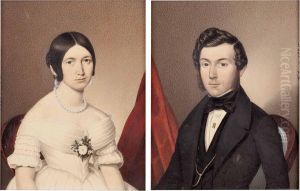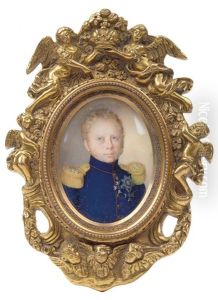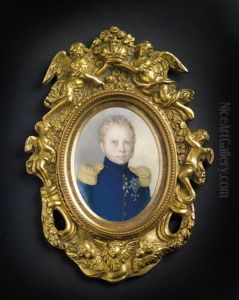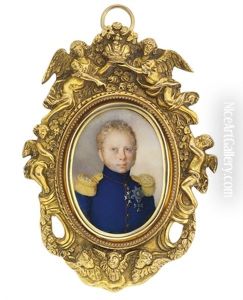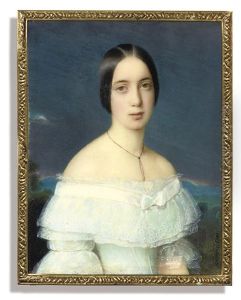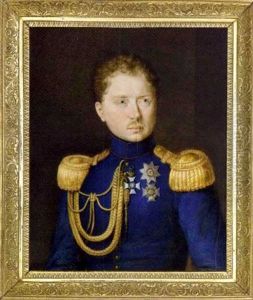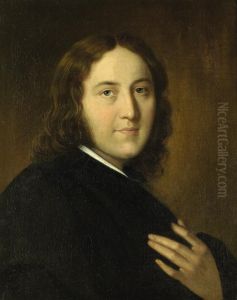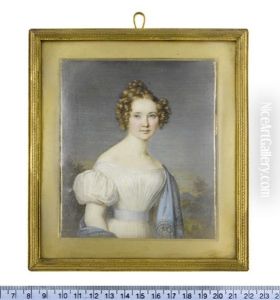Johann Michael Holder Paintings
Johann Michael Holder was a German artist known for his contributions to painting and engraving during the 19th century. Born in 1796 in Nürtingen, a small town in the southwest of Germany, Holder developed an interest in the arts at a young age. His initial education in art came from local craftsmen and artists, which was common for the time. As he matured, his talent became more apparent, leading him to pursue a more formal education in the arts.
Holder's work is characterized by its attention to detail and the use of light and shadow, a testament to the influence of the Dutch and Italian masters whom he admired. Throughout his career, he focused primarily on landscapes and portraits, capturing the beauty of the German countryside as well as the intricacies of human expressions. His landscapes, in particular, showed a remarkable understanding of natural elements and an ability to render them with both accuracy and emotion.
In the mid-1820s, Holder moved to Stuttgart, where he became part of a vibrant artistic community. This period was crucial for his development as an artist, as he was exposed to a wider range of styles and techniques. He also had the opportunity to exhibit his work more frequently, gaining recognition and commissions from a broader audience. Despite the challenges of making a living as an artist at the time, Holder managed to establish himself as a respected painter and engraver in the region.
Holder's contributions to the art world were not limited to his own creations. He was also a mentor to younger artists, sharing his knowledge and skills with the next generation. His legacy is reflected in the works of his students and in the continued appreciation of his art. Johann Michael Holder passed away in 1861, leaving behind a body of work that continues to be admired for its beauty and technical proficiency. Although not as widely known as some of his contemporaries, Holder's artwork remains an important part of the 19th-century German art landscape, celebrated for its contribution to the romantic and realistic movements of the time.

